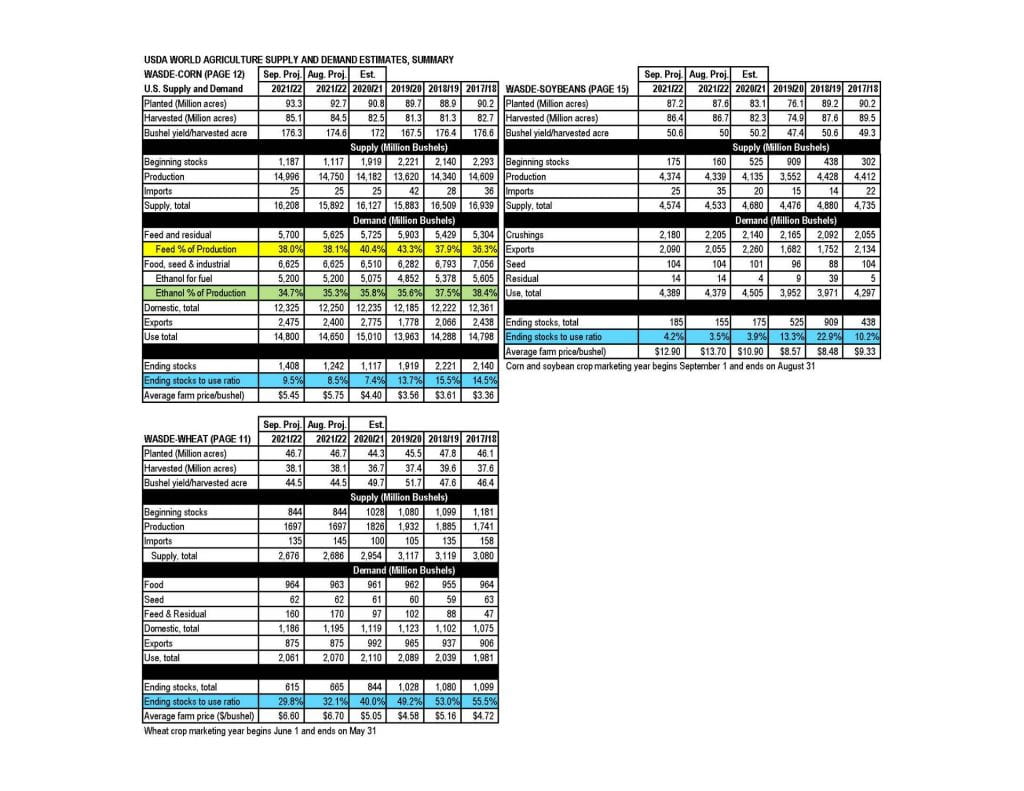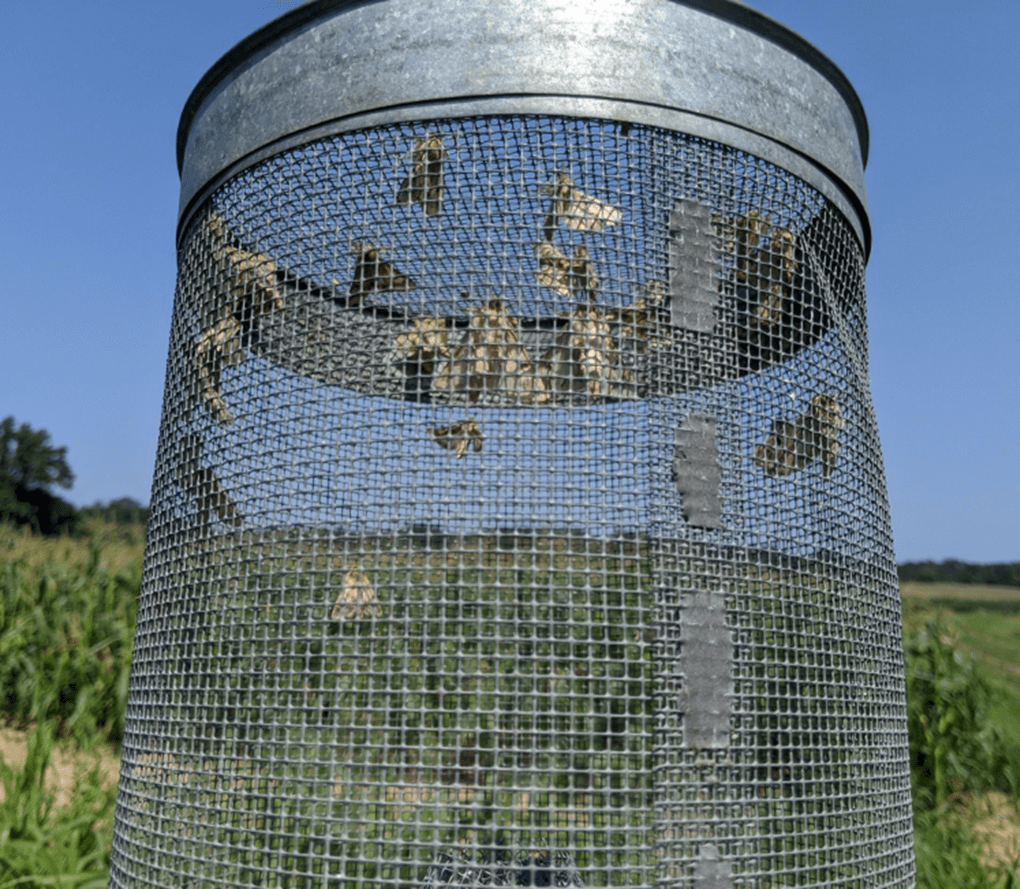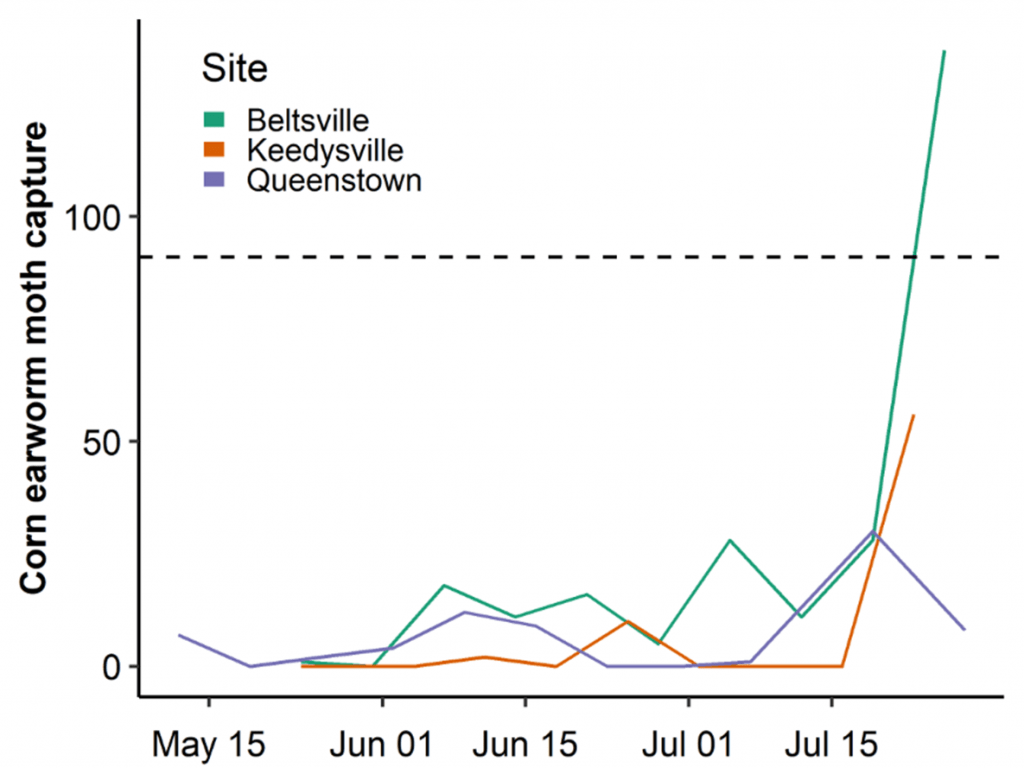Nicole Fiorellino, Extension Agronomist, Loius Thorne, and Joeseph Crank
University of Maryland, College Park
Test Procedures
The University of Maryland offers a fee-based, corn hybrid performance testing program to local and national seed companies. The results from these replicated trials provide agronomic performance information about corn hybrids tested at five locations in Maryland considered representative of the state’s geography and weather conditions. Table 1 summarizes the agronomic and production information for each test site.
Hybrids tested in 2021 were entered by participating seed companies, listed in Table 2, that were solicited for submission of hybrids. These hybrids represented those currently available for purchase to experimental lines still under evaluation. Select Dekalb, Mid-Atlantic Seed, and Pioneer hybrids were identified for use as checks in the test. The inclusion of the performance data for check hybrids that are proven performers in the Mid-Atlantic region allows comparisons of newer hybrids to proven hybrids.
During 2021, 71 hybrids were tested using three maturity groups: early season (11 hybrids, Table 5), mid-season (24 hybrids, Table 6), and full season (36 hybrids, Table 7). Each company designated maturity group assignments for hybrids they submitted. Check hybrids were included in each of the five tests. All hybrid genetic traits and seed treatments are listed in Tables 5-7.
Each hybrid was replicated three times per location. Planting was done with a modified, four-row John Deere 1750 planter equipped with coulters and trash wheels for no-till planting. The modified planter units were manufactured by Clewell Precision Machine, Inc. Milton, PA. Each plot was four rows spaced 30 inches apart. Target population was 30,000 seeds per acre at dryland locations and 34,500 seeds per acre at the irrigated location (Salisbury Facility). Plot harvest length was approximately 32 feet. Harvest stand and number of lodged plants were counted within two weeks of harvest. The center two rows of each plot were harvested with an Almaco R1 research combine (Almaco Co., Nevada, IA). Grain yield, harvest moisture, and test weight were measured for each plot. These data were collected with a Seed Spector LRX system (Almaco Co., Nevada, IA) and recorded on Microsoft xTablet T1600.
Test Results
The overall performance across the locations for the hybrids in each maturity group is reported in Tables 8-10. Hybrid performance at individual locations can be found in Tables 11-25. The agronomic characteristics reported are yield, in bushels/acre corrected to 15% moisture content, harvest moisture content, percent lodging, test weight (lb/bu) at 15% moisture, and harvest population.
Good weather in 2021 was a welcome change from the events of 2020. Generally, yields were good across the state, with some isolated pockets experiencing challenging conditions. Planting and harvest was timely this year with yields averaged across the five locations for early (11), mid- (24), and full-season (36) varieties at 217 bu/ac, 234 bu/ac, and 244 bu/ac respectively. These yields were 28%, 29%, and 32%, respectively, to those observed for early, mid-, and full-season hybrids in 2020.
A least significant difference (LSD) value is reported for each test where statistical significant differences (P ≤ 0.1) for a variable were observed among hybrids. The mean separation value has been calculated at the 10% probability level (LSD0.1). The LSD can be used to compare two hybrids within the same test. For example, when the yield difference between two hybrids is greater than the LSD value, there is a 90% certainty that the difference in yield is real rather than due to random variability. The coefficient of variation (CV) is a measure of the variability that existed at a test site. It is used as an indicator of the degree of precision for a test. In general, CV values below 10% for yield indicate that the precision for distinguishing yield differences was very good. Generally, CV values were mostly low this year, with at least one maturity group at each location lacking power to determine differences in yield among the hybrids.
Relative Yield
The selection of a hybrid or hybrids based solely on performance at one location is not recommended. It is better to select hybrids based upon performance over a number of locations and years, if possible. In order to compare the performance of each hybrid across the five locations, relative yield tables (Tables 26-28) are included. Relative yield is the ratio of the yield of a hybrid at a location to the mean yield of all the hybrids at that location expressed in percentage. A hybrid that has a relative yield consistently greater than 100 across all testing locations is considered to have excellent stability. In 2021, 11 hybrids met this standard: Hubner H4390RC2P (early), Dekalb DKC59-82RIB (mid), Dekalb DKC61-41RIB, Hubner H09G056, Seed Consultants SC1112AM, Dekalb DKC67-94RIB (full), Dekalb DKC70-27RIB, Dyna-Gro D55VC80, Growmark FS 6306T RIB, Hubner H13G513, and Seedway SW 1579VT.
Acknowledgments
The University of Maryland Corn Testing Program would not be possible without the assistance and oversight of equipment maintenance, seed packaging, planting, data collection, and plot harvest by lead research technician, Louis Thorne. This work could not be accomplished without the assistance of research technician Joseph Crank during the season. Also, we acknowledge the undergraduate students for their assistance with seed packaging. Huge thanks go to Dr. Bob Kratochvil for his many years of work developing the protocols for the corn testing program and the undoubtable number of hours that he dedicated to the preparation of these reports. Thank you to the crews at Wye Research and Education Center and Lower Eastern Shore Research and Education Center for sharing your experience, tools, and space in your shops with Louis Thorne as he continues to keep our equipment running. Table 1 outlines the crews at each test location who assisted with land preparation, flagging, plot management, and harvest. I personally would like to acknowledge each farm manager, David Armentrout, John Draper, Ryan McDonald, and Douglas Price for their support of the corn testing program and their continued patience with me.
Additional Information
The inclusion of hybrids in these tests is not an endorsement by the University of Maryland. Advertising statements about a company’s hybrids can be made as long as they are accurate statements about the data as published. Statements similar to “See the Maryland Corn Hybrid Tests Agronomy Facts No. 54” or “Endorsement or recommendation by the University of Maryland is not implied” must accompany any reproduced information.
For more information regarding variety trials and how to interpret the results, refer to University of Maryland Fact Sheet FS-1119.




